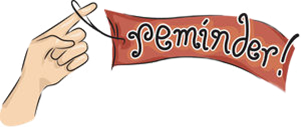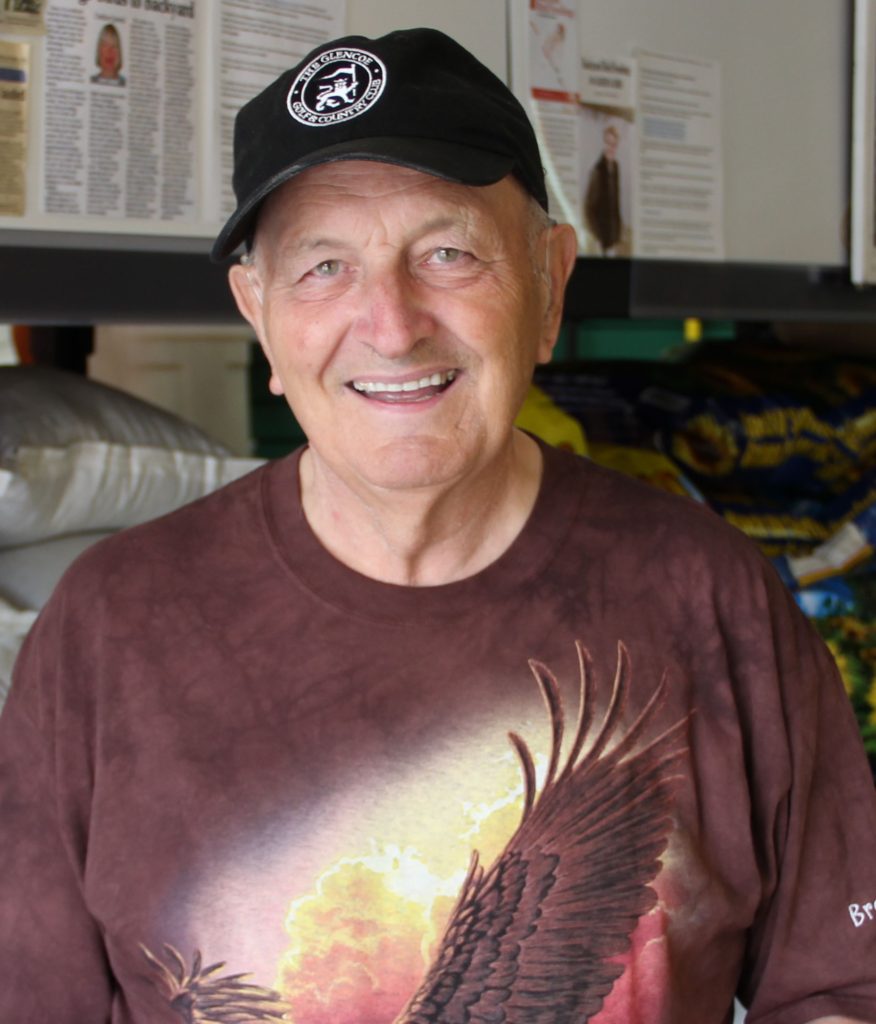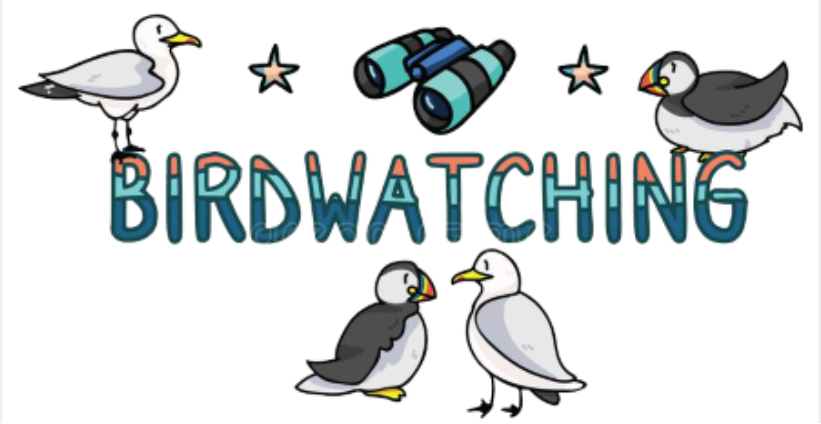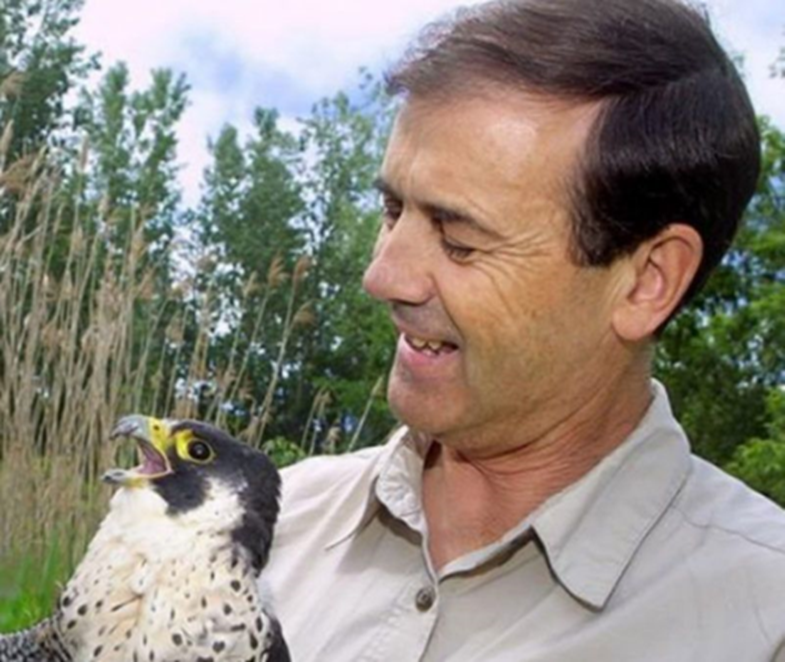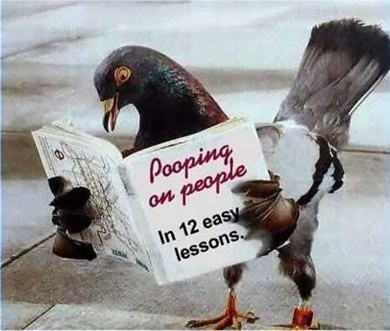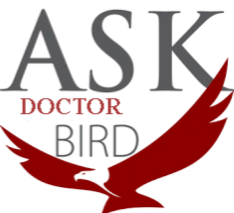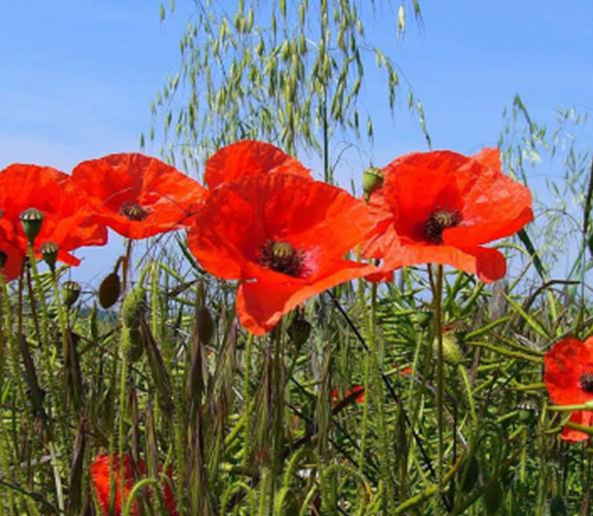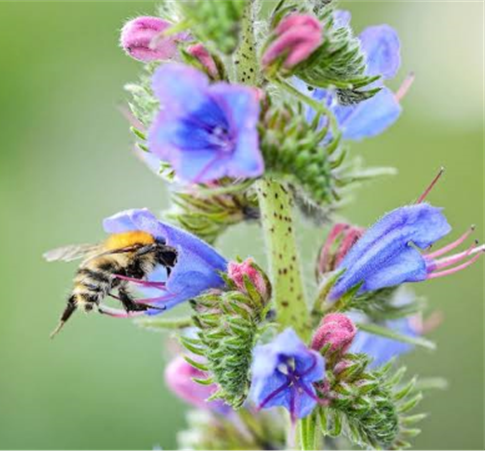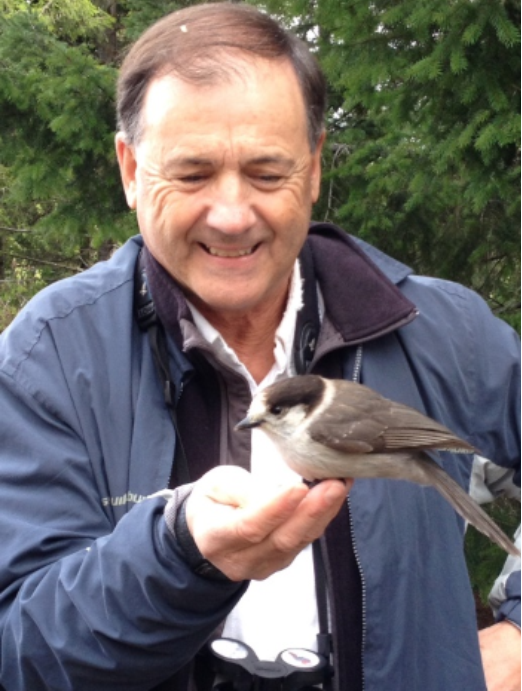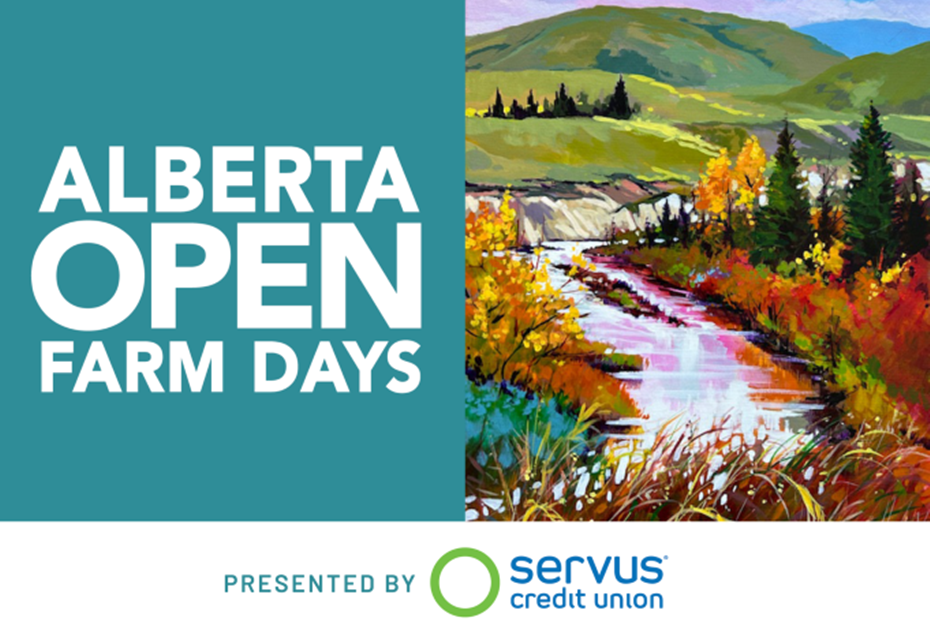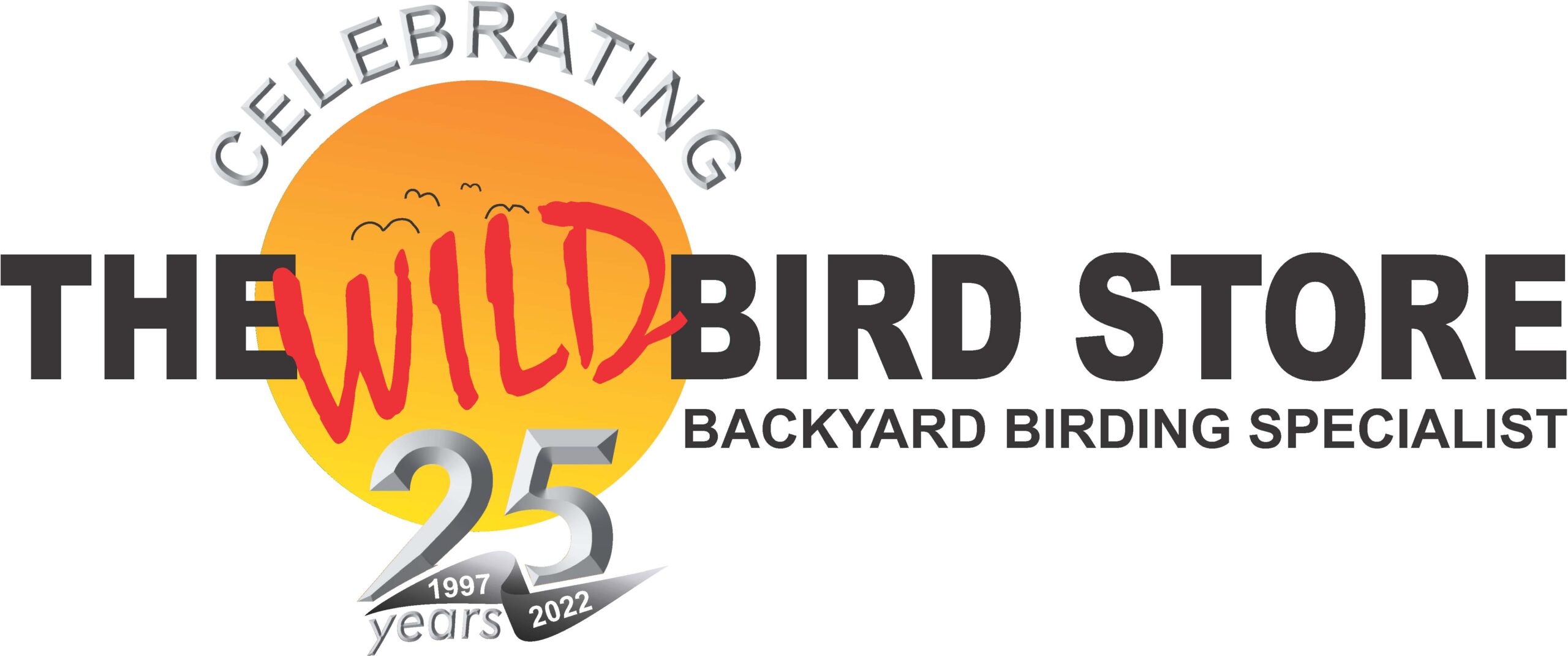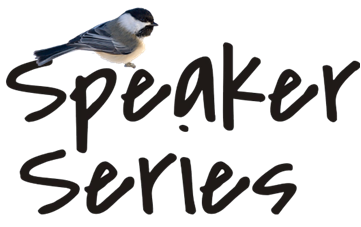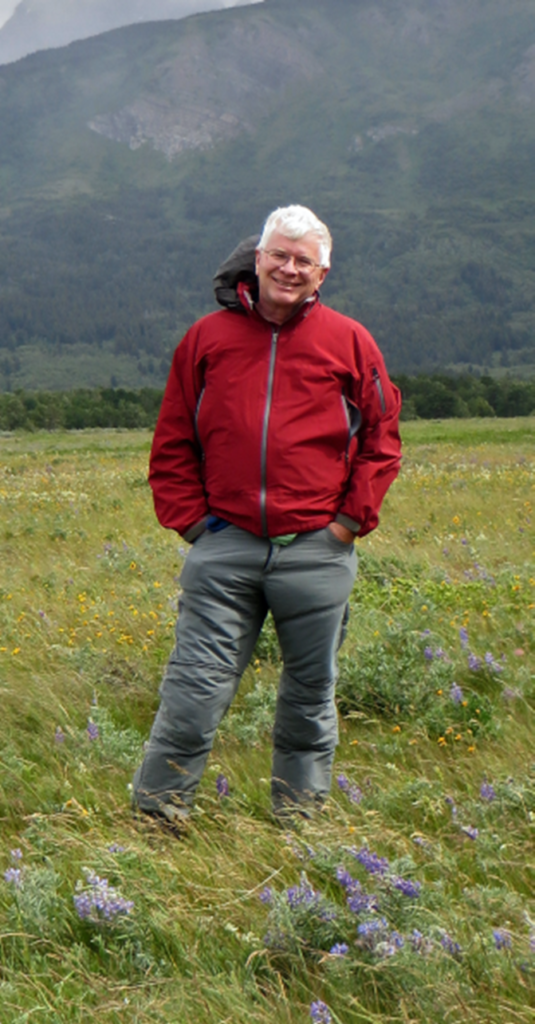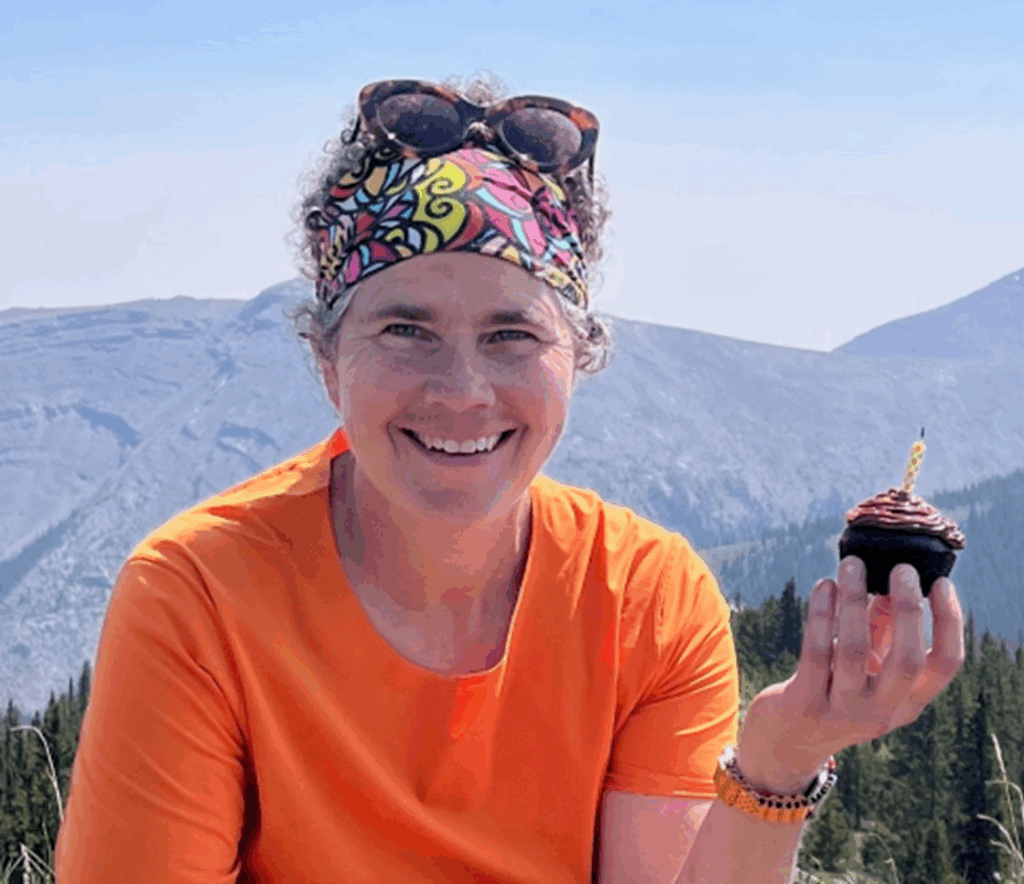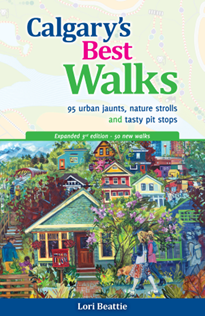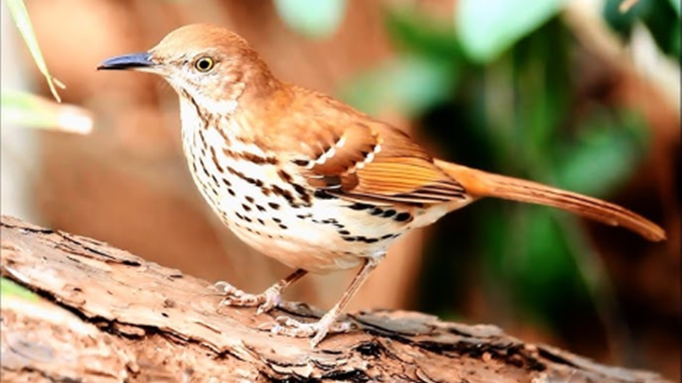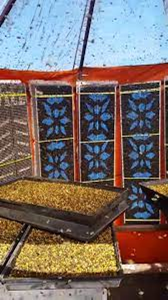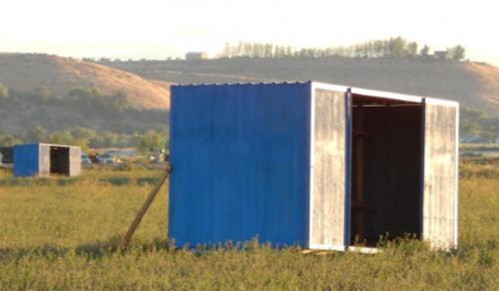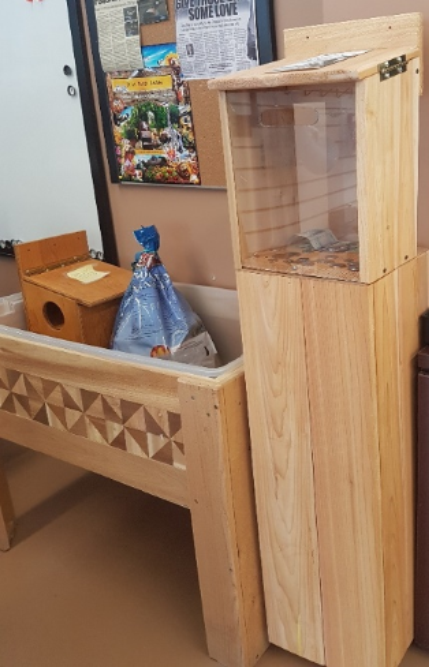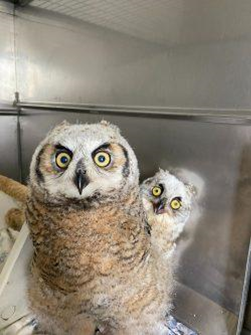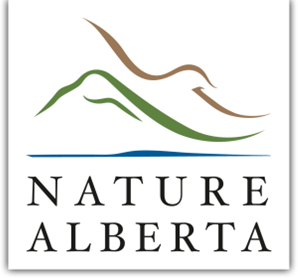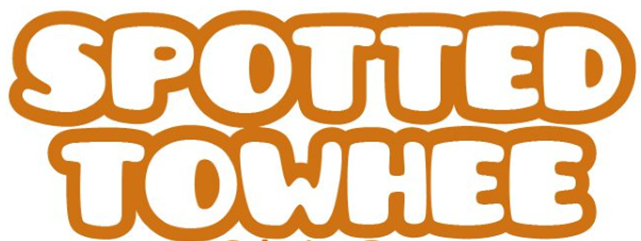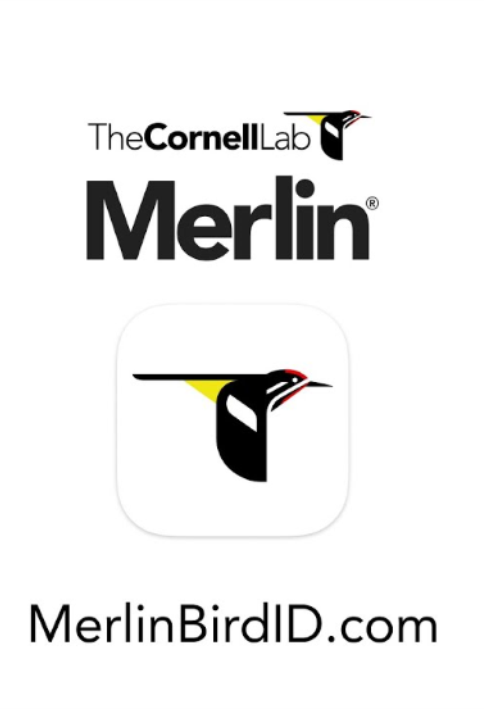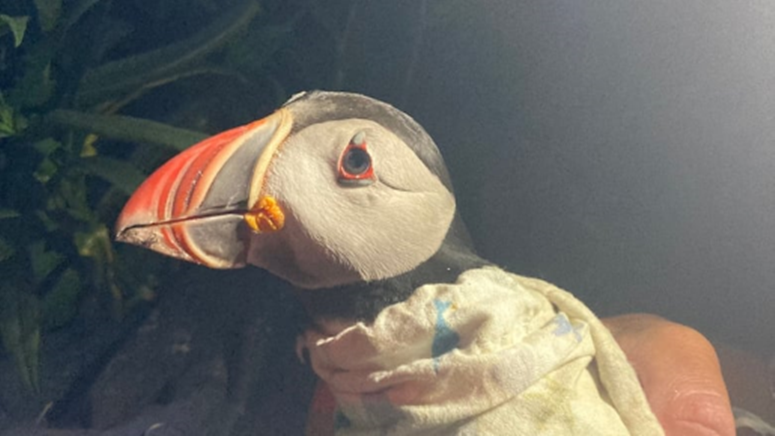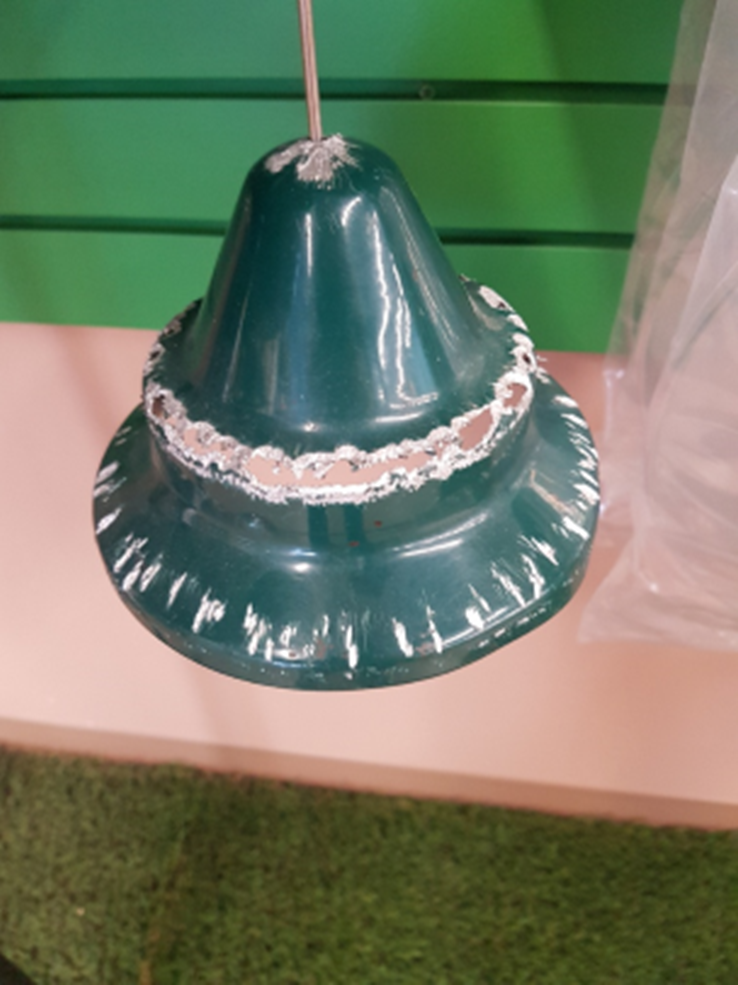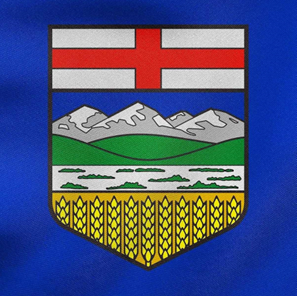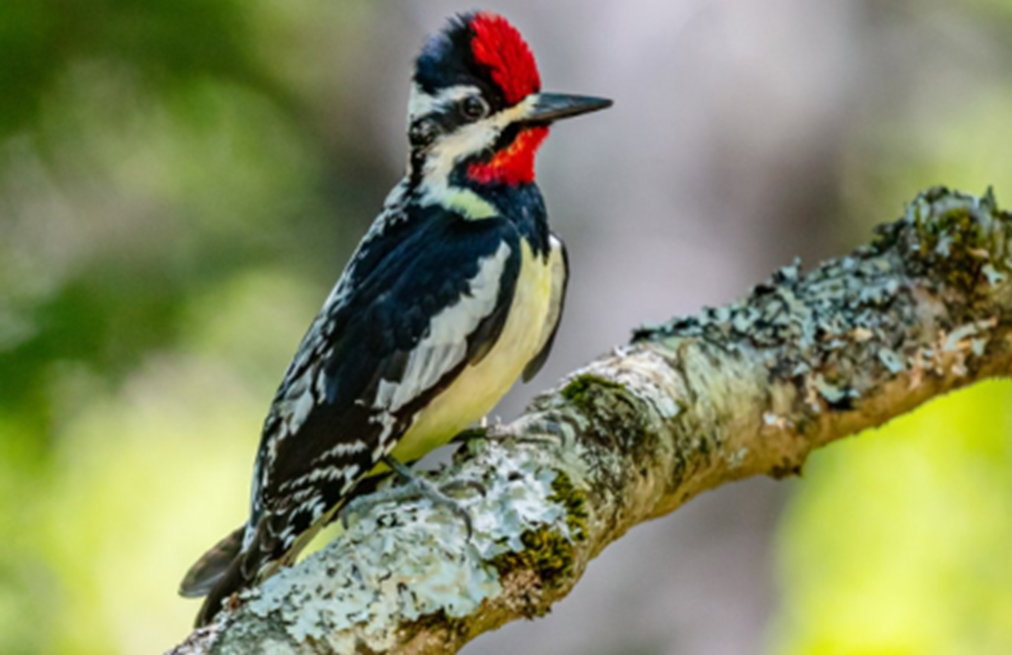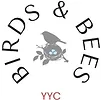LINK TO PDF NEWSLETTER DOWNLOAD

August 2025
Only three species of waxwings exist in the world: The Bohemian of North America and Eurasia, Cedar of North America, and the Japanese of eastern Asia. The Cedar is a short-distance migrant, which breeds across boreal and northern temperate North America, and overwinters across the southern half of the continent and into Central America. Within this range, it moves nomadically in response to food supplies, and is an important and very effective seed disperser. Unlike most fruit-eating birds that regurgitate seeds, Cedar waxwings digest the entire fruit, and seeds are eventually dispersed in their feces. Breeding birds arrive in Alberta later than most summer migrants, their nesting phenology being closely tied to peak fruiting.
WHAT DO CEDAR WAXWINGS EAT?
In addition to the aforementioned berries and fruit (especially fruit from juniper and dogwood trees, as well as wild cherries, strawberries, and mulberries), Cedar waxwings will also eat certain flowers and drink their sap. In the summer, Cedar waxwings like to eat insects such as ants, beetles, mayflies, dragonflies and caterpillars. Young Cedar waxwings still living in the nest are mostly fed insects for the first few days before graduating to a more berry-heavy diet afterwards.
LOOKING TO ATTRACT CEDAR WAXWINGS TO YOUR BACKYARD?
These stylist birds are fairly common across Alberta but don’t eat seeds, like other backyard birds, so they won’t come to bird feeders. Instead, you’ll need to plant native plants with small fruits like dogwood, serviceberry, cedar, juniper, hawthorn and winterberry.

· Cedar waxwings with orange instead of yellow tail tips began appearing in the northeastern U.S. and southeastern Canada in the 1960s. The orange colour is the result of a red pigment picked up from the berries of an introduced species of honeysuckle. If a waxwing eats enough of the berries while it is growing a tail feather, the tip of the feather will be orange
· Building a nest takes a female Cedar waxwing 5 to 6 days and require more than 2,500 individual trips to the nest. They occasionally save time by taking nest materials from other birds’ nest, including nests of Eastern kingbirds, Yellow-throated vireos, Orioles, Robins, and Yellow warblers
· The Cedar waxwing is one of the few North American birds that specializes in eating fruit. It can survive on fruit alone for several months. Brown-headed cowbirds that are raised in Cedar waxwing nests typically don’t survive, in part because the cowbird chicks can’t develop on such a high-fruit diet
· The collective nouns for a flock of Cedar waxwings are “ear-full” and “museum.”
CHECK OUT OUR UPCOMING SPEAKER SERIES LATER IN THE NEWSLETTER.


HOME DELIVERY SCHEDULE FOR MONTH OF August 2025
Thursday August 7, Thursday August 21

All participants on any bird walk must have purchased a ticket through our website – www.wildbirdstore.ca and present the ticket to Jim prior to the bird walk.
The weather plays a big part in bird walks and Jim reminds participants to dress anticipating weather changes and to carry water to keep hydrated.
Frank Lake (Day Trip)
Saturday August 9, 2025
9:00am meet at back of Wild Bird Store and car pool—remember to dress for the weather, and bring water and lunch
Ticket price: $7.00 + GST
Confederation Park
Saturday August 23, 2025
9:00am meet and park on Roselawn Crescent 1 block east of 14th Street NW (on north side of Confederation Park)
Ticket price: $7.00 + GST

We offer a discount if you return your 20 LB or 40 LB seed bags so that we can re-use them (sorry—not the Mother Nature bags which we cannot re-use), suet ball containers, or if you bring your own container or bag to fill . This discount is in addition to any other discount offered.
Ever wonder how that white splash on your newly washed car was made? Why one should not “French-kiss” a duck? Did you know that “cowbirds” really exist in the true sense of the word? Why do some birds eat rocks? Do some birds actually barf up their food on purpose? Would you drink coffee that came from a bird’s butt? If you’ve got the stomach to hear the answers to these tasteless questions and many more on the disgusting food habits of birds, join Professor David M. Bird on a visual exploration of the avian digestion system beginning from the opening at the top to the one at the other end. It promises to be a gut-wrenching, ad-nauseam experience!
The Whole Poop and Nothing but the Poop on Bird Poop
Thursday, August 21, 2025 6:00pm
Ticket price: $20.00 (+GST)
Tickets can be purchased on the Wild Bird Store website: www.wildbirdstore.ca under resources – calendar. Tickets are non-refundable
As an Emeritus Professor of Wildlife Biology of McGill University in Montreal, Quebec, Dr. Bird has published close to 200 peer-reviewed scientific papers and supervised 50 graduate students on a wide range of wildlife themes, mostly on birds of prey and in more recent years, the application of UAVs (drones) to wildlife research and conservation. Until his retirement to Vancouver Island in 2013, he taught several university-level courses, including ornithology, wildlife conservation, animal behaviour, and scientific/public communication. Dr. Bird was recently honoured as a co-recipient of the Jamie Smith Memorial Mentoring Award by the Society of Canadian Ornithologists for his role in the training and fostering of almost 1,000 ornithology students over a 35-year span. He has written and/or edited more than a dozen books, the most recent ones being the third edition of Birds of Canada, the second edition of Pocket Birds of Canada, and The Canada Jay – A National Bird for Canada?. Besides his innumerable public lectures and radio, television and newspaper appearances, Dr. Bird is a regular columnist/contributor on birds for two magazines, Canadian Wildlife and BWD (formerly known as Bird-Watcher’s Digest). He is currently heading a national team to establish the Canada Jay as Canada’s national bird.
David M. Bird, Ph.D.
Emeritus Professor of Wildlife Biology
McGill University, Montreal (currently residing in North Saanich, BC)
www.canadajay.org — please sign the petition to make the Canada Jay the National Bird of Canada!
CHECK OUT OUR UPCOMING SPEAKER SERIES LATER IN THE NEWSLETTER.
Response:
Self-medication through diet has been documented in a wide varity of organisms ranging from tiny fruit flies and honeybees to bears and elk. As for birds, the phenomenon has only been documented in Macaw parrots up until 2022, when a team of scientists working together from various facilities in Madrid, Spain discovered self-medication in arguably the heaviest flying birds in the worlds. Great bustards can tip the scales up to 30 pounds but still manage to get their carcasses up into the sky! Sporting a plumage with unique colours (more on that later), they breed in the grasslands from western Europe and northwest Africa to central and eastern Asia with more than two-thirds of the entire population calling the Iberian Peninsula home. Great bustards have now joined the ranks of Macaw parrots in seeking out certain plant foods to self-medicate against disease. They look for two plants in particular—two weed species called corn poppies and purple viper’s bugloss, which are also sought by humans for traditional medicine such as pain relief, sedation, and immune system boosting. For the bustards, both plants contain antiprotozoal and nematode worm-killing compounds, white purple viper’s bugloss also contains antifungal agents. Analyzing 623 poop samples from wild bustards, the Spanish research team found tissue from stems, leaves and flowers of 90 plant species. The two weed species were found in amounts more than expected in the birds’ diets, suggesting that they actively seek them out as food, particularly in the breeding season. My guess is that those males who actively find and consume these two useful plants, are more likely to be selected by females, perhaps through enhanced plumage colouration suggesting strong immune systems, but more research is needed to bear this out.
David M. Bird, Ph.D., Emeritus Professor of Wildlife Biology, McGill University www.askprofessorbird.com

David M. Bird is Emeritus Professor of Wildlife Biology and the former Director of the Avian Science and Conservation Centre at McGill University. As a past-president of the Society of Canadian Ornithologists, a former board member with Birds Canada, a Fellow of both the American Ornithological Society and the International Ornithological Union, he has received several awards for his conservation and public education efforts. Dr. Bird is a regular columnist on birds for Bird Watcher’s Digest and Canadian Wildlife magazines and is the author of several books and over 200 peer-reviewed scientific publications. He is the consultant editor for multiple editions of DK Canada’s Birds of Canada, Birds of Eastern Canada, Birds of Western Canada, and Pocket Birds of Canada. To know more about him, visit www.askprofessorbird.com or email david.bird@mcgill.ca.
For more information and maps. please visit:
www.albertaopenfarmdays.ca
WATER: The lifeblood of every farm
COME MEET YOUR RUARL NEIGHBOURS
August 16 & 17, 2025
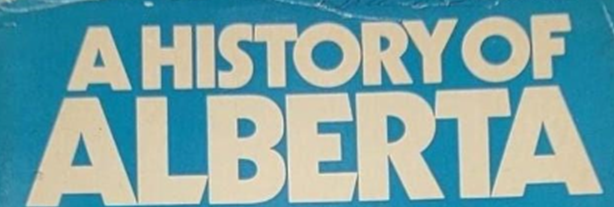
Frankburg, Alberta
—all that remains of this predominately Mormon settlement, founded in 1902 by Christopher H. Frank of Santaquin, Utah is the cemetery. An agricultural community, Frankburg was populated by farmers from surrounding areas. By 1905 the village had grown to include a church, church meeting house, post office and some fine homes. Early church records state all were doing well financially, but by 1931 due to poor crops and low prices several years in succession, most villagers were experiencing difficulty. Some people moved away, beginning a slow but steady exodus. Year after year crops were destroyed by heavy summer frosts, drought, hail and grasshoppers that plagued the “dirty thirties.”
In 1936 a farmer planted 150 acres of wheat and harvested just 22 bushels. A few courageous families tried to keep Frankburg going, but by 1935 most residents, having lost their holdings and their homes, were forced to move elsewhere. Many moved to Rosemary, AB, and some moved to Calgary. By 1937 the church organization in Frankburg was dissolved. By 1945 Frank Lake had dried up and became a flat area of alkali dust. Sadly, all that remains of this pioneer settlement are the 47 graves of those who died forging a part of Alberta history.
Frank Lake, one of southern Alberta’s “hotspots” for birding, was named after Christopher H. Frank.

CHECK OUT OUR UPCOMING SPEAKER SERIES!
LOCATION:
WEDNESDAY OCTOBER 1ST 6:00PM
TICKET PRICE: $20.00 + GST
(Tickets can be purchased through the Wild Bird Store website under resources – calendar.)
Tickets are non-refundable
www.wildbirdstore.ca

This presentation covers the amazing and colourful birds of Belize, with a brief excursion to birding in the nearby Mayan City of Tikal, in Guatemala, including photos taken on two trips in 2017 and 2020. Belize is a gentle introduction to tropical birding, with a variety of habitats, comfortable amenities, no language barrier, and many familiar species to North American birders.
LOCATION:
WEDNESDAY OCTOBER 8TH 6:00PM
TICKET PRICE: $20.00 +GST
(Tickets can be purchased through the Wild Bird Store website under resources – calendar.)
Tickets are non-refundable
www.wildbirdstore.ca
Did you ever wonder how the spectacular Rocky Mountains came to be? Allow geologist Dale Leckie to guide you through one of Canada’s most amazing UNESCO World Heritage Sites—the Canadian Rocky Mountain Parks. Leckie tells the dramatic story of the Rockies, its rivers and valleys, glaciers and hot springs, caves and karst, mountain building, and erosion. This talk describes localities through Banff, Yoho and Jasper National Parks that travelers would be wise to seek. All the geological wonders can be seen from roadside pullouts or after short walks along well-maintained paths. With eye-catching illustrations and photographs, this talk blends storytelling with science, and natural beauty with easy-to-understand explanations. Dale will tell you what you need to know to experience and understand the geologic natural history of Canada’s Rocky Mountain Parks, where more than half a billion years of history waits to be discovered. He answers your questions about features that make the Rockies such a profound destination, including Lake Louise—what geological processes created its turquoise waters? Miette Hot Springs—what makes the water so hot? Emerald Lake—how did glaciation create this body of water? Athabasca Glacier—what does this glacier tell us about ancient climate?
LOCATION:
WEDNESDAY OCTOBER 22ND 6:00PM
TICKET PRICE: $15.00 +GST
(Tickets can be purchased through the Wild Bird Store website under resources – calendar.)
Tickets are non-refundable
www.wildbirdstore.ca
LISTEN to Lori’s CBC Homestretch walk series with Jenny Howe (began July 7)
LISTEN to Lori’s 2025 interview on the CBC Eye Opener
READ Lori’s Calgary Herald “Ode to Walking” article
READ Lori’s Calgary Herald Walking Series
WATCH Lori show highlights from Calgary’s Best Walks (2025) on CTV Morning Live
Lori’s biography:
Lori Beattie the author of Calgary’s Best Walks, now in its 3rd edition, and Calgary’s Best Bike Rides, and writes and chats about walking, biking, hiking and connecting cities on foot and by bike in monthly articles in the Calgary Herald, her walk series on CBC Homestretch and many years as segment host on CTV Morning Live. She is also the owner and guide of Fit Frog Adventures where she leads year-round Calgary walks, hikes, and snowshoe days. She presents to groups on the pleasure of self-propelled urban exploration, being a tourist in your own city, building communities through walking, and making Calgary feel like home, one step, or pedal, at a time.
LOCATION:
WEDNESDAY, OCTOBER 29TH 6:00PM
TICKET PRICE: $20.00 + GST
(Tickets can be purchased through the Wild Bird Store website under resources – calendar.)
Tickets are non-refundable
www.wildbirdstore.ca

Dr. Lynch is a Fellow of the internationally recognized Explorers Club and Fellow of the Arctic Institute of North America. Lynch lives in Calgary with is wife, Audrey Lang.
Recognized and respected as one of North America’s leading wildlife and natural history photographers, Dr. Wayne Lynch has spent the last forty-six years capturing images of wildlife in places the world over. His impressive photo credits include hundreds of magazine covers, thousands of calendar shots, and tens of thousands of images published in over sixty countries. Lynch is also an award-winning science writer, a popular guest lecturer, and a veteran photo safari leader. His practical and entertaining approach to natural history, whether it be through the written or spoken word, has attracted the admiration of audiences worldwide. His books have often been praised as “a magical combination of words and images.”
Recognized and respected as one of North America’s leading wildlife and natural history photographers, Dr. Wayne Lynch has spent the last forty-six years capturing images of wildlife in places the world over. His impressive photo credits include hundreds of magazine covers, thousands of calendar shots, and tens of thousands of images published in over sixty countries. Lynch is also an award-winning science writer, a popular guest lecturer, and a veteran photo safari leader. His practical and entertaining approach to natural history, whether it be through the written or spoken word, has attracted the admiration of audiences worldwide. His books have often been praised as “a magical combination of words and images.”
With an exceptional ability to write for both adults and children, Lynch is the author and/or sole photographer of more than 70 highly acclaimed natural history books including:
Windswept: A Passionate View of Prairie Grasslands
A Celebration of Prairie Birds
Bears of the North: A Year Inside Their Worlds
Owls of the United Sates and Canada: A Complete Guide to their Biology and Behaviour
The Great Northern Kingdom: Life in the Boreal Forest
Penguins of the World (2 editions)
Penguins! The World’s Coolest Birds
Mountain Bears
Bear: Monarchs of the Northern Wilderness
Alligators: The Illustrated Guide to Their Biology, Behavior & Conservation (photographer)
Florida Manatee: Biology, Behavior & Conservation (photographer)
Polar Bears (photographer)
A is for Arctic: Natural Wonders of a Polar World
Planet Arctic: Life at the Top of the World
Ecosystem Series (Everglades, Sonoran Desert, Prairie Grasslands, Rockies Mountains, Arctic)
Our Wild World Series (Vultures, Hawks, Owls, Falcons, and Seals)
The Nature Babies Series (photographer—17 books)
The Critter Quiz Series (Babies, Houses, Teeth, Noses, Bottoms, Feet, Eyes, Tails and Tongues)
Wildlife for Kids Series( Wildlife of the Rockies, Wildlife of the Arctic, Wildlife of the Prairies, Bears, Bears, Bears)
The Wildly popular children’s book The Scoop on Poop: The Fascinating Science of How Animals Use Poop
LOCATION:
WEDNESDAY, NOVEMBER 5TH 6:00PM
Ticket price: $15.00 +GST
(Tickets can be purchased through the Wild Bird Store website under resources – calendar.)
Tickets are non-refundable
www.wildbirdstore.ca
Gavin McKinnon’s biography:
Gavin has had a passion for birding from a young age, which stems from a family trip to Point Pelee National Park on the northern shores of Lake Erie. Since then, Gavin has traveled extensively across Canada and the United States. He has also ventured farther afield and led tours in the Neotropics and Africa. After high school, Gavin attended Lethbridge College, where he studied Renewable Resource Management. Gavin enjoys sharing his knowledge and passion for birds, which led him to form his own company, Meadowlark Birding Tours, in 2022. Gavin lives in Calgary, enjoys birding locally, and is currently working on a new field guide to the birds of his home province of Alberta.
We have to admit: the rain we got on Saturday June 21st was a blessing , but we were very concerned for some of the waterfowl and shorebirds, especially the Eared Grebe’s who build their nests in shallow water and were in the midst of nesting.
So a return visit to where we had seen so many nests (over 35 of them in one pond alone) was warranted. Sunday, June 29th we ventured out and discovered most of the nests had survived and the males were frantically trying to replenish material to keep the nests dry and above water. We also discovered, to our delight, several pairs, both male and female carrying baby chicks on their backs. That is the most endearing sight to see and brought tears to our eyes. Babies have a hard life surviving to adulthood, but at least Mother Nature has given them a chance. Another great sighting that day, courtesy of “eagle eyes” Kris, was a Belted kingfisher—we have seen them before but never in Alberta. We waited around hoping he would take off and give his “rattle” call, but he was quite content to sit on his log enjoying dusk.
The hunt is on for a Pygmy owl—this is not an easy find. He/she is only 6 inches ! And Kris had spotted a Bobolink and wanted me to see it. We saw two males—no females but they may have been on the nests in the tall grass. The key for Bobolinks is to find an open field that is not harvested, so that the nests are safe from being destroyed while harvesting is being done. Also found (again with the help of “eagle eyes”) a nest of Bluejays who were being instructed by their parents on how to find their own food. A Yellow-bellied sapsucker who visited (twice) a telephone pole while we were sitting by the side of the road looking for Pygmy owls and having a picnic dinner. It was a glorious evening—could have stayed out for hours, but the night was fast approaching and time for the night creatures to come out of hiding.
UPDATE: Friday July 11th trip to Drumheller:
Jan, Kris and I headed to the badlands—always a chance to see some new species. Jan and I added two new species to our life-lists; Kris added one. A Spotted towhee and a Brown thrasher for Jan and I, while Kris added the Brown thrasher. A trip definitely worth while, but then every birding adventure is a chance to celebrate the wonders of nature.
If you are unable to make it in to the store on Tuesday for Senior’s Day Discount, then you can call the store anytime on Tuesday to place and pay for your order, and then you can pick it up later in the week at your convenience.
PLEASE NOTE: This is for customers who are currently signed up as a senior’s day customer and applies only to in-store purchases.

The farmers of Alberta are finding new ways to grow their crops and it is so encouraging :
By now the readers of this monthly newsletter, know the Wild Bird Store is passionate not only about birds, but about all the creatures and the environment. So when we discover something which puzzles us (especially Kris) we do our research and share with you, the reader, in the hope that you, like us, are encouraged by how people, in this case farmers, are searching for ways to save us all.
So we discovered these “field sheds” during a recent birding trip and had to know more. Kris seemed to latch on immediately that they had something to do with the alfalfa fields in which we had discovered them. Enter a google search and the following is our findings.
The structures (in the photos below) are in alfalfa fields , especially those that look like small sheds or shelters, are leafcutter bee shelters according to OSU (Oregon State University) Extension Service and beediverse.com. These shelters house leafcutter bees, which are used to pollinate the alfalfa, increasing crop yield. The shelters provide a safe place for the bees to nest and are often equipped with bee boards containing nest tubes. The sheds point toward the general direction of the sunrise so they warm up faster in the morning to help provide a wake-up call for the bees. The sheds are usually painted blue and white (but can also have symbols painted on them) because it is believed that the bees see them better and can find their way home a bit easier each evening.
SIDE NOTE:
Weldon Hobbs, whose Dad helped found the industry in Western Canada run MR Pollination Services in Lethbridge. He has been involved with alfalfa leafcutter bee production since 1962. Not only are these bees used across the US and Canadian West to pollinate alfalfa see, they are increasingly used to pollinate other crops such as hybrid canola see, lowbush blueberries and cranberries. Weldon’s Dad, Gordon, helped start the alfalfa leafcutter industry in Western Canada, was a renown bumble bee researcher.
ABOUT THE LEAFCUTTER BEE:
Are very effective at pollinating alfalfa because they don’t avoid the “tripping” mechanism of the alfalfa flower. When they land on the flower to collect pollen, the flower’s reproductive structure, called the keel, releases and hits the bee, often on the face, coating it with pollen. This pollen is then transferred to other flowers as the bee continues foraging, facilitating pollination.
Leafcutter bees are called such because the female bees cut pieces of leaves and flower petals to build nests for their young. They use these pieces to construct individual cells, or “cocoons,” where they lay their eggs and store food (pollen and nectar).
FOOTNOTE:
Growers feel their seed yield can be increased by 30-50% using leafcutter bees. Alfalfa is a crucial crop due to its high nutritional value as animal feed, its positive impact on soil health, and its role in sustainable agriculture practices. It’s a versatile forage that benefits livestock, improves soil fertility, and contributes to environmental sustainability.
DONATIONS
Located at The Wild Bird Store (near the seed bins). We collect your cash as well as “wishlist” donations and arrange to deliver them to local wildlife organizations including Calgary Wildlife Rehabilitation, Alberta Institute of Conservation and Ellis Bird Farm.
We ask for your support quarterly for each of these organizations.
For June, July and August, 2025 your donations will go to:
Thank you for your support
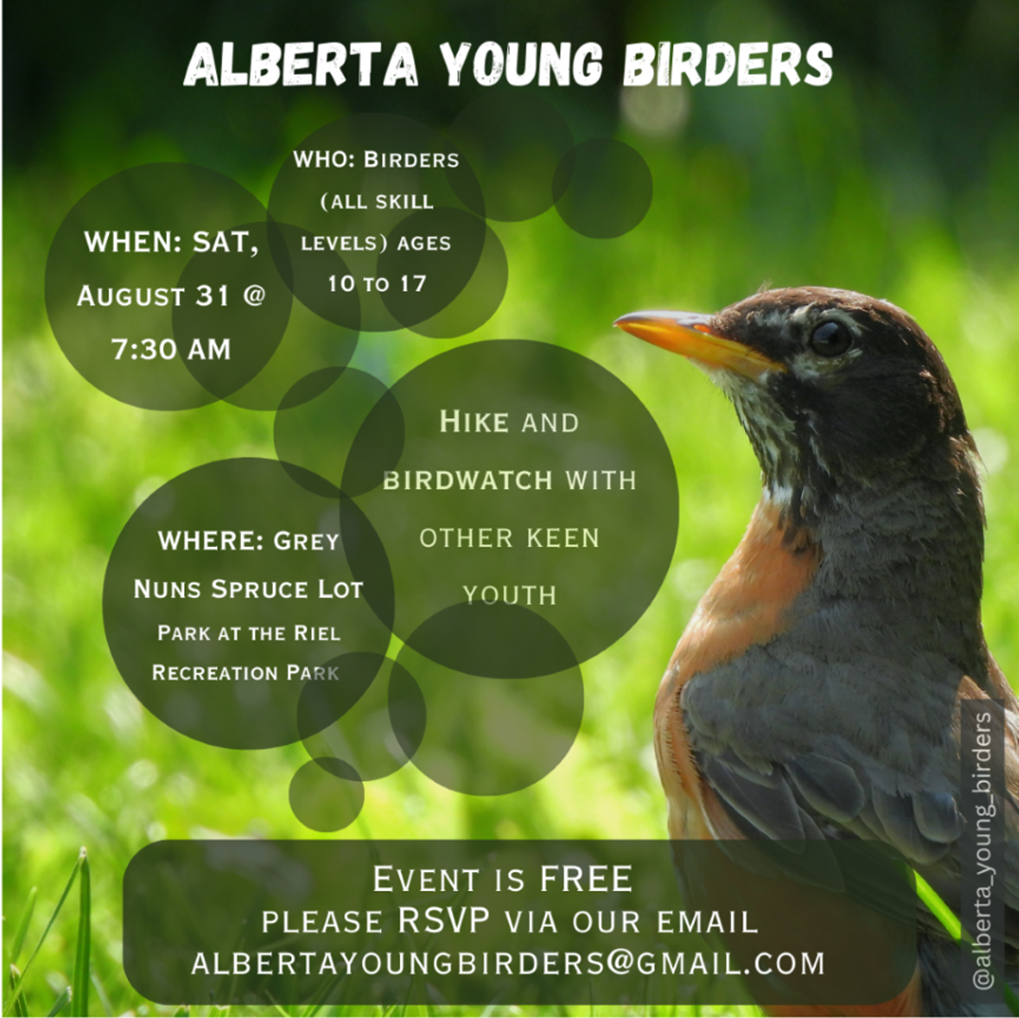
The Spotted towhee gets its name from the distinctive white spots on its wings and back, a key visual characteristic that distinguishes it from its close relative, the Eastern Towhee. A large bird, it is part of the New World sparrow family.
Both the Eastern and Spotted towhee were previously considered a single species, with the Rufous-sided towhee, but were then split into two distinct species based on genetic and physical differences, including the presence of these white spots. Although the Spotted towhee’s call is more of a cat like meow, its song is similar to the “drink-your-tea” call of the Eastern towhee, which also influenced the name of the group as a “teapot”. They are also sometimes called as a group a “tangle”, reflecting their preference for dense, shrubby habitats.
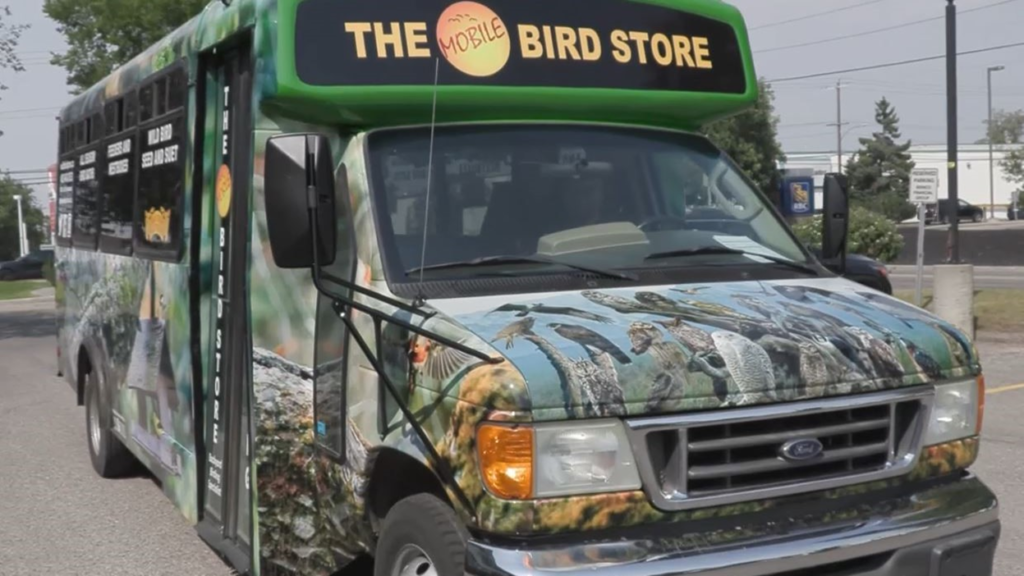

Wildwood Community Centre (4411 Spruce Drive SW): Every Tuesday 3:00pm to 6:00pm
Look for the Broxburn Vegetable truck in the lot with us!
Crowfoot Arena (corner of John Laurie & Nosehill Drive NW: Every Wednesday 2:00pm to 5:30pm
Please place orders by 12:00 noon the day before the truck is on location
Text us @ (403)701-4571 OR email us at orders@wildbirdstore.ca
Earn and redeem customer loyalty points on the Mobile Seed Truck

DELIVERY: Deliveries will still be made on Thursdays ONLY. Please phone the store at (403) 640-2632 any day prior to 12:00 noon on the Wednesday before your delivery; place and pay for your delivery. Please phone with your order as early as possible to avoid disappointment. If you have any special instructions please do not forget to inform us when you place your order.
THE DELIVERY CHARGE WILL BE $10
MINIMUM ORDER FOR DELIVERY $25.
Have you checked out the Merlin app? Would you like a demonstration on how they will help you to identify birds? Stop by The Wild Bird Store during regular business hours and staff will be happy to show you how the app will enable you to identify birds in various ways.
Identify Bird Songs and Calls
Identify Birds by your Photos
Save Birds to Your Life List
Explore lists of birds near your location
Options for shopping at the Wild Bird Store
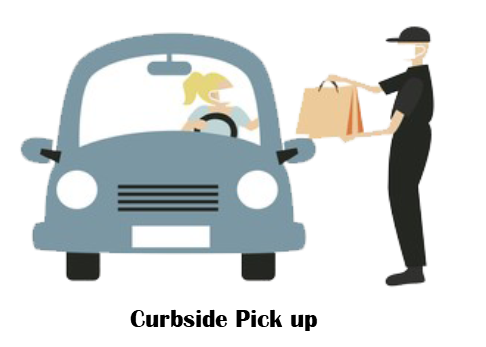
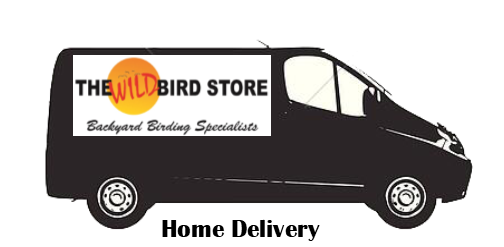

HOME DELIVERY SCHEDULE FOR MONTH OF August 2025
Thursday August 7 and Thursday August 21, 2025
THE DELIVERY CHARGE WILL BE $10. MINIMUM $25 ORDER FOR DELIVERY.
Store hours are:
10:00am to 5:00pm Tuesday through Saturday

OR any small wild animal that looks abandoned?
If you find a baby bird on the ground, it’s crucial to first assess the situation. If the bird is a hatchling (no feathers or very few), or a nestling (has some feathers but its eyes are closed and it can’t hop), try to find its nest and gently put it back. If you can’t find the nest, or if the bird is a fledgling (has feathers and is hopping around, learning to fly), its likely best to leave it alone. Parents are often nearby and will continue to care for the fledgling. If the bird is injured or you are certain it is orphaned, contact a wildlife rehabilitator.
· Leave it alone. Fledglings are naturally learning to fly and often watched and fed by their parents from the ground
· Keep pets away from the area. Dogs and cats can be a threat to fledglings
· If it’s in immediate danger (e.g., in a road). Carefully move it to a nearby bush or tree, out of harm’s way
WILDLIFE REHABILITARS FOR CALGARY AND AREA:
Calgary Wildlife Rehabilitators Society AIWC (Alberta Institute for Wildlife Conservation)
(403) 214-1312 (403) 946-2361
Please leave a message with your name, city location and a volunteer will call you back
While you are waiting for a phone call—place baby bird in a cardboard box or paper bag—do not attempt to feed or give water to the baby bird.
We offer a discount if you return your 20 LB or 40 LB seed bags so that we can re-use them (sorry—not the Mother Nature bags which we cannot re-use), suet ball containers, or if you bring your own container or bag to fill . This discount is in addition to any other discount offered.
Write a Google review on your experience at The Wild Bird Store, and as a thank you, we will give you 100 customer loyalty points ($5.00 value). To get a promo code, kindly email info@wildbirdstore.ca
(one Google review per customer)
Earn 200 customer loyalty points ($10.00 value) by referring a friend, acquaintance or fellow birder.
Please visit the store to get a promo code.
Combining our Seniors 10% discount with the Loyalty Program. (Excludes “sales” items, books & optics).
Discount for membership 10% discount for members of Fish Creek Park, AIWC, Priddis Golf Club, Nature Calgary, Sandy Cross Conservation, Springbank Garden Club and Millarville Horticultural Society. Must present valid membership card at time of purchase.
Discount for Military Members & Veterans 10% discount on
purchases in-store or on Mobile Seed Truck (sorry—excludes “sales”
items, books, optics and consignment items)

- onomatopoeia, words that imitate sounds, is frequently used to describe bird vocalizations. Common examples include “tweet,” “chirp,” “caw,” “coo,” “honk,” “squawk,” and “twitter,” Some bird names themselves are onomatopoeic, such as “Whip-poor-will” and “Chickadee.”
¨ “Hoot”: this sound is typically associated with owls
¨ “Warble”: this describes a more melodic, complex sound often associated with songbirds
¨ “Cluck” and “Gobble”: these are onomatopoeic for the sounds of chickens and turkeys, respectively
¨ Bird names: many bird names are also onomatopoeic, such as “Killdeer,” “Whip-poor-will,” and “Chuck-will’s widow,” as their names mimic their calls
¨ Phrases: some birds are even known for their calls that sound like phrases, such as the Barred owl’s “Who cooks for you?”
UNB researchers find 33-year-old puffin, marking a known record age for the bird.
Researchers at the Atlantic Laboratory for Avian Research, through the University of New Brunswick, located the puffin born in 1992 on Machias Seal Island, located in the Gulf of Maine, with its original identification bands from over three decades ago.
The research team has been monitoring puffins and five other species of seabirds, including razorbills, common murres and Leach’s storm petrels, on Machias Seal Island since 1995. Before that, Canada Wildlife Services had staff who lived on the island to oversee tourist landings, observe birds on the island and band puffin chicks.
While researchers today use two metal bands as identification markers, plastic bands were used for a couple of years after the research program began.
When a researcher spotted a puffin wearing a plastic band earlier this week, the team knew it must be very old.
They waited until dark, when puffins are more likely to be in their burrows, and then went searching.
Tony Diamond, a retired biologist who started the research program on Machias Seal Island, says he’s excited about this latest finding. Diamond is pictured on the island banding a razorbill chick 20 years ago.
Isabelle Leger · CBC News · Posted: Jul 10, 2025
Does your Aspects or Squirrel Buster feeder need some replacement parts?

Did you know that we can repair/replace parts and make it look like brand new?

How the Yellow-bellied sapsucker got its name:
These birds regularly drill ring-like rows of holes, called “sap wells,” into the wood of fruit and other trees such as yellow birch and maple, and then suck the sap (which may contain insects) the flows from them.
The yellow-bellied refers to their pale-yellow stomach. But how did the term “yellow-bellied” come to connote cowardly behavior? That question leads us down the proverbial rabbit-hole, best left for another day.

5901 3rd Street S.E.,
Calgary, AB T2H 1K3
email: info@wildbirdstore.ca
(403) 640 2632
The Store is open Tuesday through Saturday 10:00am to 5:00pm
We are CLOSED Sundays, Mondays and ALL Statutory holidays for Faith, Family and Friends.
We still offer curbside pickup every day we are open and delivery service on every other Thursday.
FOLLOW US ON:
Facebook @thewildbirdstoreyyc
Twitter @wildbirdstoreyyc
Go to YouTube, type in the search bar “The Wild Bird Store” to watch our videos and to help us become more visible . Be sure to click on “Subscribe” before you leave the page.



